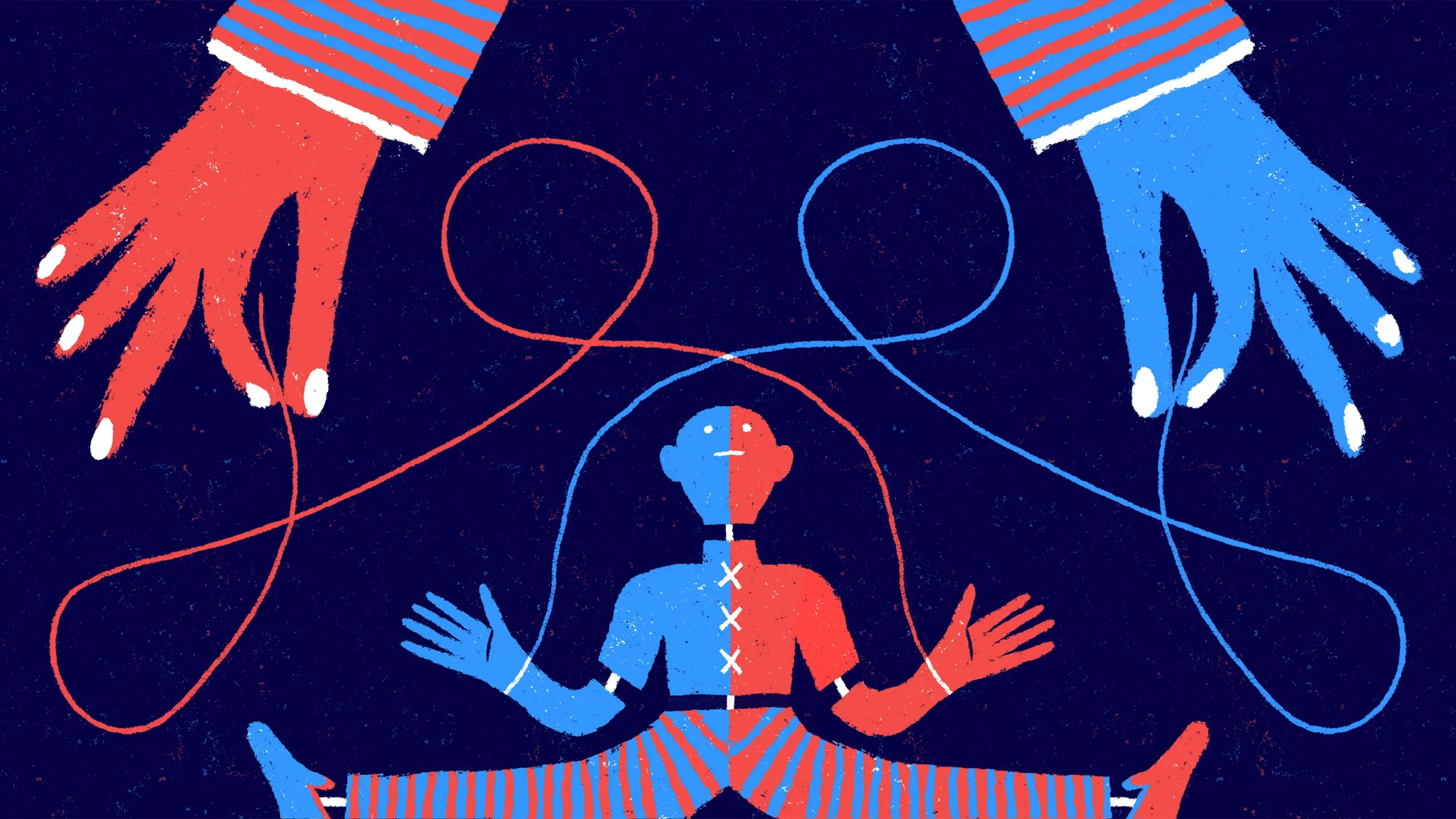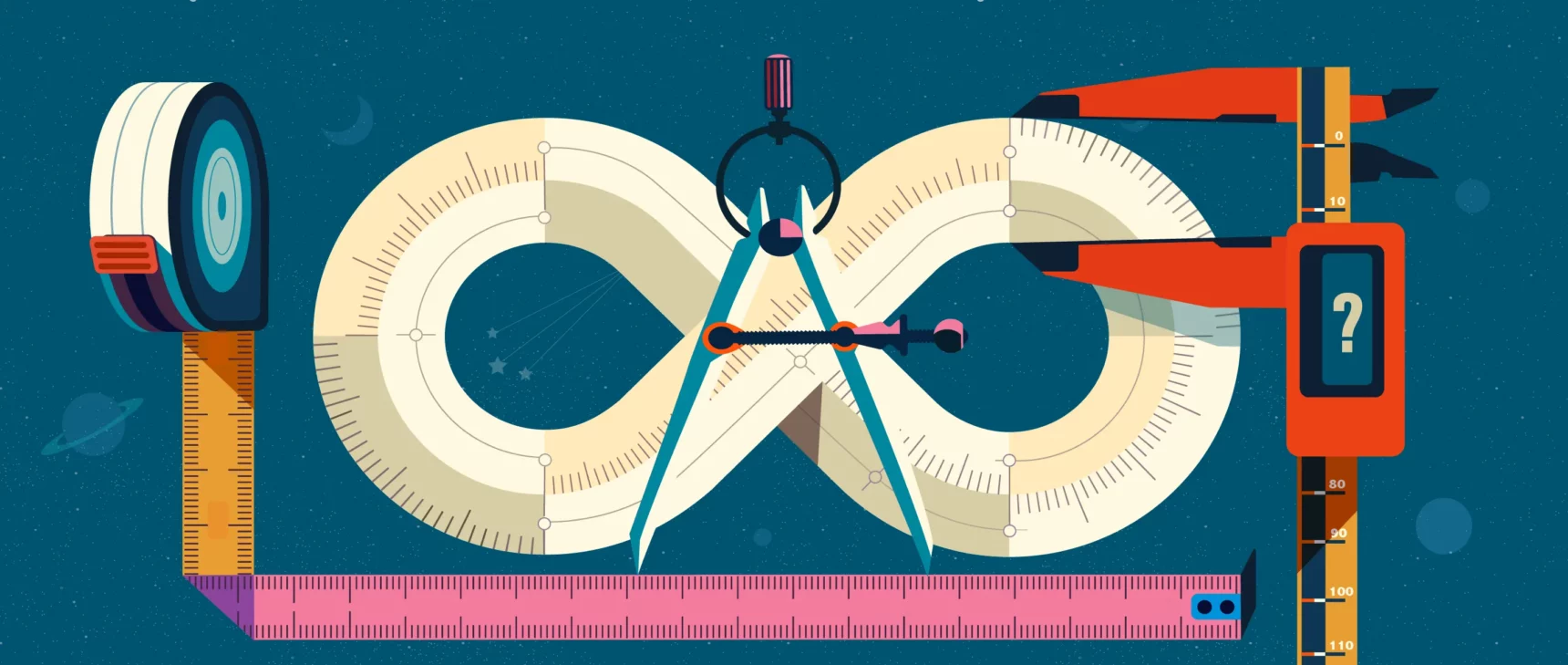Why the Brain’s Connections to the Body Are Crisscrossed

James O’Brien for Quanta Magazine
Introduction
Dazzling intricacies of brain structure are revealed every day, but one of the most obvious aspects of brain wiring eludes neuroscientists. The nervous system is cross-wired, so that the left side of the brain controls the right half of the body and vice versa. Every doctor relies upon this fact in performing neurological exams, but when I asked my doctor last week why this should be, all I got was a shrug. So I asked Catherine Carr (opens a new tab), a neuroscientist at the University of Maryland, College Park. “No good answer,” she replied. I was surprised — such a fundamental aspect of how our brain and body are wired together, and no one knew why?
Nothing that we know of stops the right side of the brain from connecting with the right side of the body. That wiring scheme would seem much simpler and less prone to errors. In the embryonic brain, the crossing of the wires across the midline — an imaginary line dividing the right and left halves of the body — requires a kind of molecular “traffic cop” to somehow direct the growing nerve fibers to the right spot on the opposite side of the body. Far simpler just to keep things on the same side.
Yet this neural cross wiring is ubiquitous in the animal kingdom — even the neural connections in lowly nematode worms are wired with left-right reversal across the animal’s midline. And many of the traffic cop molecules that direct the growth of neurons in these worms do the same in humans. For evolution to have conserved this arrangement so doggedly, surely there’s some benefit to it, but biologists still aren’t certain what it is. An intriguing answer, however, has come from the world of mathematics.
The key to that solution lies in exactly how neural circuits are laid out within brain tissue. Neurons that make connections between the brain and the body are organized to create a virtual map in the cerebral cortex. If a neuroscientist sticks an electrode into the brain and finds that neurons there receive input from the thumb, for example, then neurons next to it in the cerebral cortex will connect to the index finger. This mapping phenomenon is called somatotopy, Greek for “body mapping,” but it’s not limited to the physical body. The 3D external world we perceive through vision and our other senses is mapped onto the brain in the same way.
Creating an internal map of neural connections that accurately reflects spatial relations in the world makes sense. Consider how complicated it would be to wire neural circuits if the neurons were scattered willy-nilly throughout the brain. But while this internal neural mapping of connections solves a biological problem, it raises a geometric one: the topological challenge of projecting 3D space onto a 2D surface. Odd things happen when we do this. On a 2D map, an airplane taking the most direct path between two cities appears to travel in an arc, and satellites orbiting the globe appear to oscillate in a sinusoidal path.
And mapping 3D space onto a 2D plane in the brain seems to explain why our nervous system is cross-wired: Counterintuitive as it may seem, directing nerve fibers across the midline is the topologically simplest way to avoid errors, according to work (opens a new tab) from the biomedical engineer Troy Shinbrot (opens a new tab) and his neuroscientist colleague Wise Young (opens a new tab), both at Rutgers University. They showed that this is true for any system where a central control mechanism interacts with a 3D environment. If the connections were wired without crossing, a geometric singularity confounding left/right and up/down information would arise.
Before getting into details of why this happens, we need to recognize another fundamental property that is so ingrained in us, it’s easy to forget. That is the very concept of midline, of left and right. It exists in certain symmetrical objects, and it arises from a geometric frame of reference centered on our own bilaterally symmetrical body. A radially symmetrical jellyfish swirling in the current has no left or right. Spotting a jellyfish in the current, we might say, “Look, the jellyfish is drifting to the right.” But if you’re speaking face to face with someone across the water, that becomes “my right — your left.” It can take humans years of dancing the hokeypokey to learn this difficult concept, and some never quite manage it.
Since left and right depend on a frame of reference, people frequently confuse the letters “d” and “b,” and “p” and “q,” but they rarely confuse “q” and “d.” In the first two cases, the identical shapes are flipped along the vertical axis (swapping left and right), and in the second, they are flipped along the horizontal axis (swapping up and down). As bilaterally symmetrical creatures we never mistake up and down, because those directions are always the same, regardless of viewpoint, but left and right are relative to an object.
Similarly, when we look in a mirror, we perceive ourselves as an image that appears to swap left and right, turning letters on our T-shirts backward. But what is really happening is a front-back transformation. Photons travel in straight lines to and from the mirror. They show your face as it is “seen” by the mirror, not according to the mental perception you form from the inside looking out. Both your real right hand extended out to the side and the mirror image of that hand are pointing in the same compass direction. Letters on your T-shirt appear reversed for the same reason that the name “Quanta” would appear flipped, as “Quanta” if you wrote it with your finger on a frosty window and then went outside to look at it.
Now imagine that the windowpane is the 2D surface of your skin. The neural map in your brain for the touch receptors on your skin will similarly flip the orientation of the writing pressed against your skin from the outside. The point is that mapping from different perspectives, and especially from 3D onto a bilaterally symmetrical plane, sets up some significant topological problems.
To better understand this, let’s imagine the brain and body as two parallel planes. One could stitch a thread directly from a point on the body plane to the corresponding point on the brain plane. Likewise, a second thread could be run directly between a second pair of points without crossing the first thread. But in real life, the brain is a three-dimensional structure, with organic shapes and a highly folded cerebral cortex; our body is similarly three-dimensional.
That third dimension changes everything. The simplest way to introduce three-dimensionality into the 2D maps in our brain is to fold in the edges of the “body” plane 90 degrees, representing (for example) the skin of your chest folded around the sides of your rib cage. Folds in the cerebral cortex introduce a third dimension there too. Now, since the fibers must pass through the midline, because that’s where the central nervous system in our body runs, the two fibers become crossed.
Merrill Sherman/Quanta Magazine; source: https://doi.org/10.1002/ar.20731 (opens a new tab)
What would happen if the two-dimensional planes representing brain and body were folded in opposite directions as mirror images and connected point to point without crossed pathways?
Merrill Sherman/Quanta Magazine; source: https://doi.org/10.1002/ar.20731 (opens a new tab)
The horizontal x and y axes for both the body and the brain’s body map would retain the same orientation, but they would have opposite directions for their vertical z axes. The folds in the maps create what in mathematical terms are called geometric singularities — places where a property diverges or becomes ill-defined.
This alteration in the geometry of the perceived world means that the price of keeping our neural connections uncrossed would be steep. Picture an ant crawling across your body. To make sense of the sensation as the ant crawls up your chest and then traverses over to your shoulder, your brain would have to switch from one somatotopic map to another one with the opposite z-axis orientation. Your perception of 3D space would be inverted. A central control or sensation network would be confounded by the need to change orientations this way.
This abstraction may be difficult to visualize, so let’s try a more concrete example. Imagine two small panes of glass set at right angles, with one upright and one flat, that have the labels “front” and “bottom” etched on them. The pad of your finger is pressed against the back of the “front” one so it can feel the etched lettering. We can imagine how to represent the brain’s map of the perceptions through the finger: If the connections between the fingertips and the brain don’t cross, then the perceived “front” label will be flipped top to bottom, for the reasons described above.
Merrill Sherman/Quanta Magazine; source: https://doi.org/10.1002/ar.20731 (opens a new tab)
Now imagine that your finger rotates downward to press against the bottom pane instead. The physical environment of the finger hasn’t changed at all, but the map of the perceptions has: Now the “bottom” label is flipped and the “front” label isn’t.
Merrill Sherman/Quanta Magazine; source: https://doi.org/10.1002/ar.20731 (opens a new tab)
Look more closely, though, at the two perception maps. You can’t simply rotate one to turn it into the other, even though a small physical rotation is all that the finger did. What this shows is that for the nervous system to maintain uncrossed connections, the brain would need to keep flipping one axis of its body maps as the body parts moved, which would be impossibly complex.
While there are lots of solutions to this wiring problem, the most elegant is to have two bilaterally symmetrical systems of wiring between the brain and the body, with the connections from each side of the body crossing the midline.
Now, this all makes sense mathematically, but it’s important to note that we don’t know for certain that this is truly why our brains and bodies are connected the way they are. There is very little biological research on this intriguing question. The convenient dodge often heard is that the scientific method tells us “what,” not “why.” But whether or not this explanation is correct, it’s an example of how we can sometimes solve enduring biological puzzles by changing our frame of reference.



